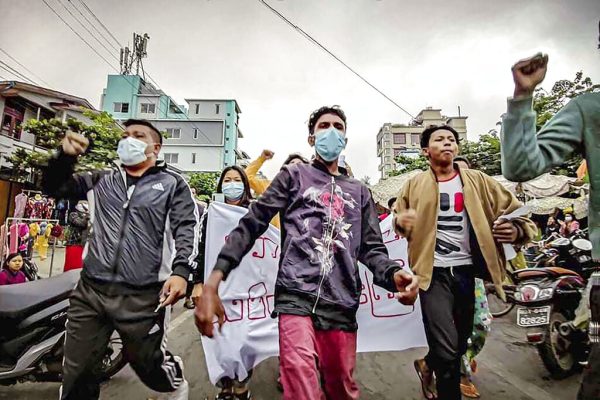
A paradigm shift is needed to understand Myanmar’s politics and why the people’s revolution continues to make progress on the ground without any significant support from the international community. The multiethnic peoples of this country, the largest in continental Southeast Asia, want the military, sometimes known as the Tatmadaw, to leave politics. They no longer see the military, at least in its current shape or form, as a necessary institution that has the willingness and capability to defend the country from potential external threats. Instead, the military is now viewed as a mere power-thirsty institution made up of thugs, who have embezzled the country’s wealth for decades and recklessly murdered thousands of its citizens.
The Spring Revolution is more than a political movement that aims just for regime change. What is taking place in Myanmar today is a kind of revolution of thought – a revolution of how we think about and understand ourselves, our country, our histories, our cultures, and our future, compelling us to unwrap old lies and propaganda and achieve our collective potential as a country and union of peoples.
Political analysts and pundits alike need to start thinking outside the box and update the conventional paradigm through which they view and analyze Myanmar’s political problems.
One of the central paradigms that needs shifting is that a nation’s military will always act in the interest of the country and its people. Most nations’ militaries act in accordance with their national interest, but not all. The Myanmar military historically has certainly not.
First of all, the country we have been told to call Myanmar is not just a nation; it must be studied and looked at as a nation of many nations that is still in the making or in progress. The multiethnic nationalities that have fought for their right to self-determination have never agreed on what the country’s name should be. The dominant Burmese people have attempted to build a Myanmar (or Burma) primarily with ethnic Bamar culture and characteristics. After seventy-plus years, this has spectacularly failed. Efforts have been made to establish a federal democratic union, but they have not yet been successful either.
Second, what we have known and understood as a national army is not an army that acts in the interest of the nation. Nor has it ever defended the interests of the many nations residing within the boundaries of the country. In fact, the military is at war with its own people. From Karen, Kachin, and Mon to Rakhine, Shan, and Ta’ang, every single ethnic group in the country has put up their resistance against this military and its abuses. Now, Bamar people in the plains – in particular, those in Sagaing, Magwe and Mandalay regions – have also joined the resistance. This essentially shuts the door for the regime to recruit new soldiers because the dry zone has traditionally been its recruiting ground.
Myanmar, so long as it is under military rule, is irredeemable. After the repeated violent suppression of initially non-violent protests against the military coup, the people of Myanmar feel they have no option but to fight against the dictatorial system, whatever shape or form it takes, in the name of freedom and self-determination. They had given the benefit of the doubt to the military for the last seventy years but it has proven consistently that it is not interested in building an inclusive nation and state.
Since 2011, many of the ethnic resistance organizations took the chance of entering ceasefires with the military, and some attempted peace dialogues. Similarly, the National League for Democracy, ethnic political parties, and other political actors participated in elections and entered parliament under the framework of the military-drafted 2008 Constitution. Attempting to negotiate with the military and playing by the military’s rules only resulted in the military leadership violating those ceasefires, throwing out its own constitution, and destroying more lives. The military has shown repeatedly that all it wants is permanent domination of the country’s politics.
The international community has two options: either to stand with justice-seeking multi-ethnic and intersectional revolutionary forces, including the newly-emerged people defense forces, or to side – either openly or tacitly – with a thuggish military regime that has presided over the recent killing of more than 5,000 civilians, including pregnant women, disabled people, and students, and the burning of houses and churches in Karenni and Chin states. Of course, we hope and encourage our democratic friends around the world to choose the former rather than the latter.
Understanding Myanmar’s Spring Revolution
Source: Frappler

0 Comments